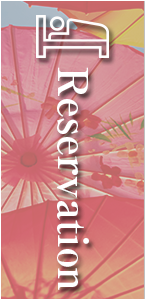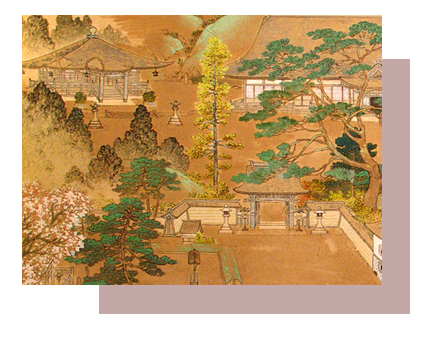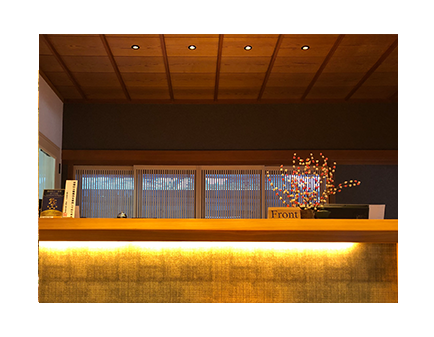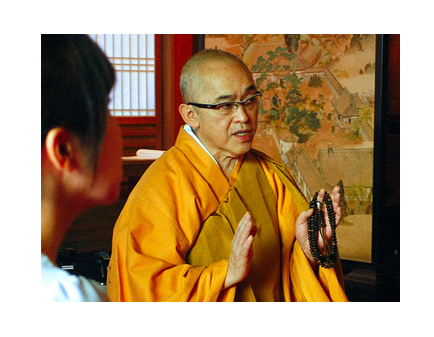




Step into a sacred sanctuary where time slows, hearts open, and the wisdom of centuries welcomes you. Koyasan Fudoin invites you to experience the quiet power of presence and the enduring beauty of tradition.

 Fudo-in is a temple dedicated to Fudomyo-o (Sanskrit Acala), the most important of the Five Wisdom Kings and symbol of determination. It was founded in 906 as one of twelve temples by Saiko (870-943), a high-ranking monk, in the "West Valley", which is a very convenient area for a visit and stay. The temple is also known as the main temple for the Yamashinas (an Imperial family branch) and is called "Yamashina Betsu-in". Bifukumonin (1117-1160), the Empress of Emperor Toba (1103-1156) and a devout follower of Kobo-daishi, was buried here according to her last will and in respect for her lifetime contributions to the temple, such as donating a precious Amida-Sutra and three Amida statues.
Fudo-in is a temple dedicated to Fudomyo-o (Sanskrit Acala), the most important of the Five Wisdom Kings and symbol of determination. It was founded in 906 as one of twelve temples by Saiko (870-943), a high-ranking monk, in the "West Valley", which is a very convenient area for a visit and stay. The temple is also known as the main temple for the Yamashinas (an Imperial family branch) and is called "Yamashina Betsu-in". Bifukumonin (1117-1160), the Empress of Emperor Toba (1103-1156) and a devout follower of Kobo-daishi, was buried here according to her last will and in respect for her lifetime contributions to the temple, such as donating a precious Amida-Sutra and three Amida statues.

 At Fudo-in, you can enjoy your meals with a great view of a beautiful garden, attend the morning devotional service, practice sutra copying in a quiet environment, far away from any traffic. A stay at the Fudo-in will be an "ultimate healing experience" which only this historic temple can offer.
*Please refer to the pictures of our guest rooms, bathrooms, dining hall, and other facilities.
At Fudo-in, you can enjoy your meals with a great view of a beautiful garden, attend the morning devotional service, practice sutra copying in a quiet environment, far away from any traffic. A stay at the Fudo-in will be an "ultimate healing experience" which only this historic temple can offer.
*Please refer to the pictures of our guest rooms, bathrooms, dining hall, and other facilities.

 The resident monk graduated from the Department of English Studies at Kobe City University of Foreign Studies and the Department of Buddhist Studies at Graduate School of Koya-san University. In 1984, he was appointed as the resident monk for Koya-san Shogakuin and then for Fudo-in in 1994. He loves gardening and nature.
The resident monk graduated from the Department of English Studies at Kobe City University of Foreign Studies and the Department of Buddhist Studies at Graduate School of Koya-san University. In 1984, he was appointed as the resident monk for Koya-san Shogakuin and then for Fudo-in in 1994. He loves gardening and nature.
On July 7th, 2004, Koya-san was registered on the World Heritage list as "a sanctuary of the Kii Mountain Region and its trails. Many people from all over the world, including the pilgrims knocking on the doors of "88 Great Temples of Shikoku", pay a visit to Koya-san on a daily basis. There is a sanctuary that cordially welcomes visitors any time, any day, with a Buddha-like compassion - That is the true picture of Koya-san.

 Koya-san is a mountain area chosen by Kobo-daishi as a Buddhist training centre for Shingon Mikkyo about 1,200 years ago (in 816) and the core of all Shingon temples, whose locations are found at 1,000m above sea level, which is higher than another Buddhist sanctity, Hieizan (Mt. Hiei). The two wooden monoliths, designated as culturally important properties by the state, at the Main Gate, say, "Hibi no yogo o kakasazu shite, shojo no iseki o kenchi su (I visit anyone, any place, anyday, to see and learn from historic sites everywhere", which indicates that Kobo-daishi's belief and determination to go to any place and help anyone in trouble with his two dicsiples. On top of the mountain is a basin shaped valley, where there is a sanctity called "Danjo Garan". At "Danjo Garan", many halls and towers, along with Buddha statues and "mandala" (Mikkyo paintings), welcome visitors. Okunoin is found in the deep forest of cedar trees, where there are many people's graves.
Koya-san is a mountain area chosen by Kobo-daishi as a Buddhist training centre for Shingon Mikkyo about 1,200 years ago (in 816) and the core of all Shingon temples, whose locations are found at 1,000m above sea level, which is higher than another Buddhist sanctity, Hieizan (Mt. Hiei). The two wooden monoliths, designated as culturally important properties by the state, at the Main Gate, say, "Hibi no yogo o kakasazu shite, shojo no iseki o kenchi su (I visit anyone, any place, anyday, to see and learn from historic sites everywhere", which indicates that Kobo-daishi's belief and determination to go to any place and help anyone in trouble with his two dicsiples. On top of the mountain is a basin shaped valley, where there is a sanctity called "Danjo Garan". At "Danjo Garan", many halls and towers, along with Buddha statues and "mandala" (Mikkyo paintings), welcome visitors. Okunoin is found in the deep forest of cedar trees, where there are many people's graves.

 Kobo-daishi was born in what was then known as "Sanuki" (Kagawa Prefecture today). He started learning classical Chinese studies and history as early as at the age of 15 and then went on to read Chinese classics and Confucianism at the Department of Literature at the national university in the capital city when he was 18. While diligently following the elite path, he met a famous monk and took a tutorial with him on Kokuzo-Gumonji (a Mikkyo method), the experience which was the beginning that led Kobo-daishi's life to change radically. In 804, Kobo-daishi became a monk at 20 and was chosen by the state as part of the first cultural mission led by Kadonomaro Fujiwara to Changan, the capital of the Tang Dynasty. Kobo-daishi was taught the orthodox Mikkyo by a high monk, Keika, and was the eighth monk to be honored with a "Ajari Henjo Kongo" title during his 2 year stay in the capital, before he returned to Japan in 806. As soon as he reached Japan, Kobo-daishi began to go around the country and put a huge amount of effort into spreading the Shingon Mikkyo teaching everywhere. In 811, Dengyo Daishi, the founder of Tendaishu Buddhism, became a disciple of Kobo-daishi, and helped push Kobo-daishi's fame among the Japanese Buddhists and in the imperial palace of Japan. A large number of people came to Kobo-daishi and asked him to make them his disciples, finally leading to the establishment of Shingonshu.
Kobo-daishi was born in what was then known as "Sanuki" (Kagawa Prefecture today). He started learning classical Chinese studies and history as early as at the age of 15 and then went on to read Chinese classics and Confucianism at the Department of Literature at the national university in the capital city when he was 18. While diligently following the elite path, he met a famous monk and took a tutorial with him on Kokuzo-Gumonji (a Mikkyo method), the experience which was the beginning that led Kobo-daishi's life to change radically. In 804, Kobo-daishi became a monk at 20 and was chosen by the state as part of the first cultural mission led by Kadonomaro Fujiwara to Changan, the capital of the Tang Dynasty. Kobo-daishi was taught the orthodox Mikkyo by a high monk, Keika, and was the eighth monk to be honored with a "Ajari Henjo Kongo" title during his 2 year stay in the capital, before he returned to Japan in 806. As soon as he reached Japan, Kobo-daishi began to go around the country and put a huge amount of effort into spreading the Shingon Mikkyo teaching everywhere. In 811, Dengyo Daishi, the founder of Tendaishu Buddhism, became a disciple of Kobo-daishi, and helped push Kobo-daishi's fame among the Japanese Buddhists and in the imperial palace of Japan. A large number of people came to Kobo-daishi and asked him to make them his disciples, finally leading to the establishment of Shingonshu.
In 816, the then Emperor Saga endowed him with Mt Koya. Kobo-daishi brought many of his disciples and carpenters to the mountain to have them organize and construct the Buddhist mountain. Koya-san Kongobuji was the result of their work. In 823, the government ordered him to take charge of Toji (the Eastern Temple of Kyoto). Since then, Toji has been used as both the main training centre of Shingon and its main philanthropic institution. The government ordered that Toji accomodates 50 monks on a permanent basis, ban monks from other sects from living there and focus on the monks' Mikkyo study.
In 826, Kobo-daishi opened a school called "Shugei Shuchiin" for the public to the east of Toji. The school admitted anyone, regardless of his/her social class or wealth. His contribution to Japanese culture and infrastructure is also noteworthy: Kobo-daishi was a great calligrapher, painter and sculptor; he invented "Iroha character system", discovered hot springs, taught the use of coal and petrol, funded the Mannoh pond work, and made bridges and roads. For this reason, Kobo-daishi was called "The Mother of Japanese Culture". He died in 835 and was buried at Okunoin on March 21st the same year, in accordance with his will. After his death, Kobo-daishi's high disciple, Shinnen Daitoku saw the successful construction of Garan and established Koya-san as one of the most important Buddhist training centres. Currently, there are 117 temples as well as Garan and Okunoin on the mountain, making it as a mysterious and inspirational core.

 A famous story has been told as to how and why Kobo-daishi chose this area, so far away from the capital and at 1,000m above sea level, as a sanctuary.
A famous story has been told as to how and why Kobo-daishi chose this area, so far away from the capital and at 1,000m above sea level, as a sanctuary.
After 2 years of studying hard, Kobo-daishi was about to leave China from a beach in the Ming province and was already thinking deeply about where his Garan should be built, so he threw his "Sanko" (three headed harpoon, a Buddhist tool) into the air, praying that the best site be found. The "Sanko" flew in the sky and landed where Garan currently stands. Kobo-daishi looked for the "Sanko" everywhere and went to Uchi county in Yamato (Gojo city in Nara Prefecture today). There, he met a 2m tall hunter with a reddish dark face, an arrow in his hand and two dogs, white and black. Kobo-daishi was led by the dogs to cross the Kino River and go deep into a steep mountain. Out of nowhere, a woman appeared and said to Kobo-daishi, "I am the master of this mountain. I will help you". With that woman, Kobo-daishi went even deeper into the mountain and found himself on a plateau shaped like the back of pot. He saw a pine tree. There, he found his "Sanko" hanging on the tree! It was then that he was convinced that the place was the best for his Mikkyo project and decided to open a Shingon temple. The woman whom he met was the goddess enshrined at Nyutsu Hime Shrine in Amano village at the mountain foot. The hunter was also enshrined by Kobo-daishi as "Kariba Myojin" (the god of hunting).
The Power of Prayer, Revealed by Science.Koyasan’s Prayer, Through the Eyes of Science.